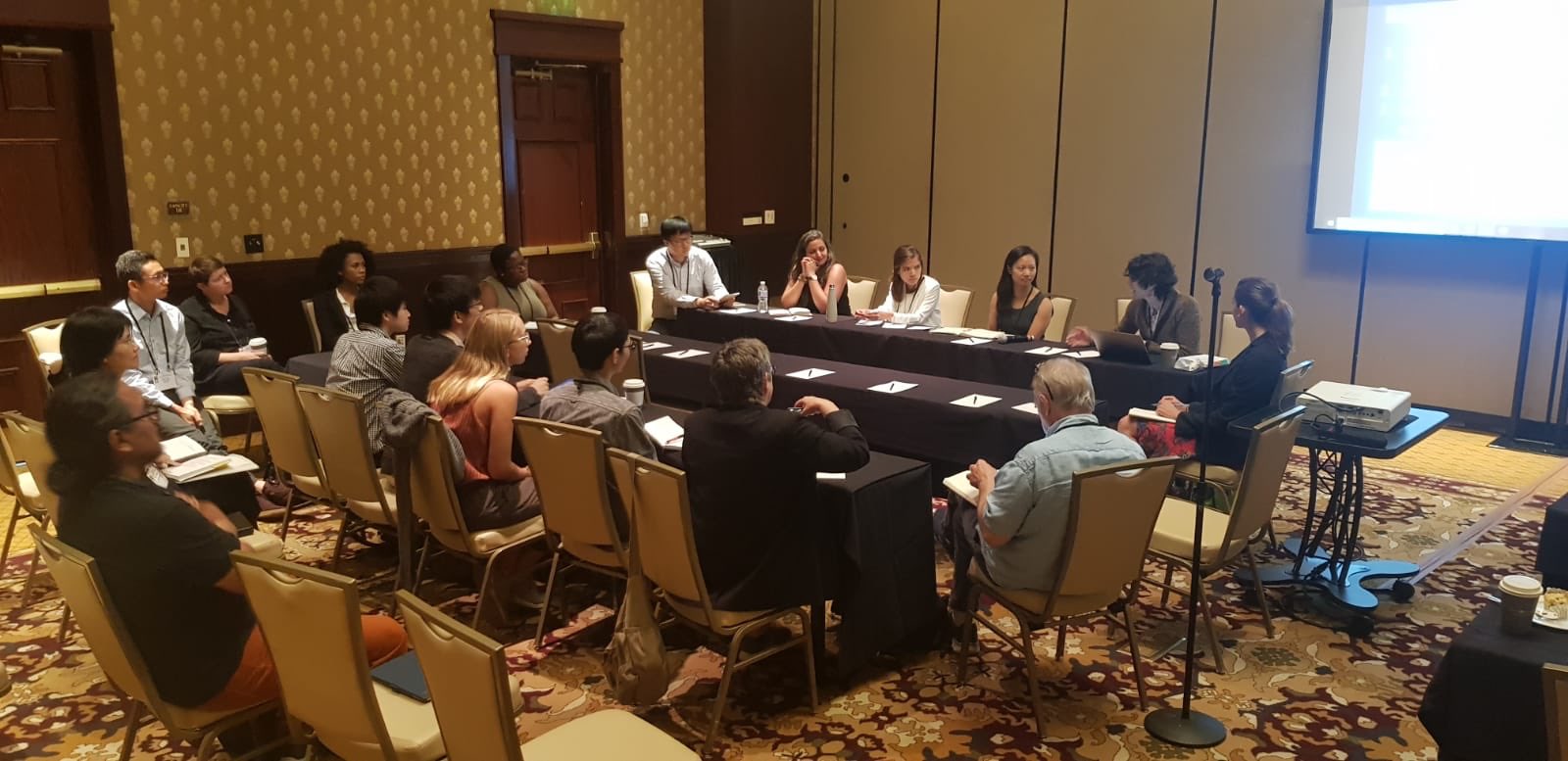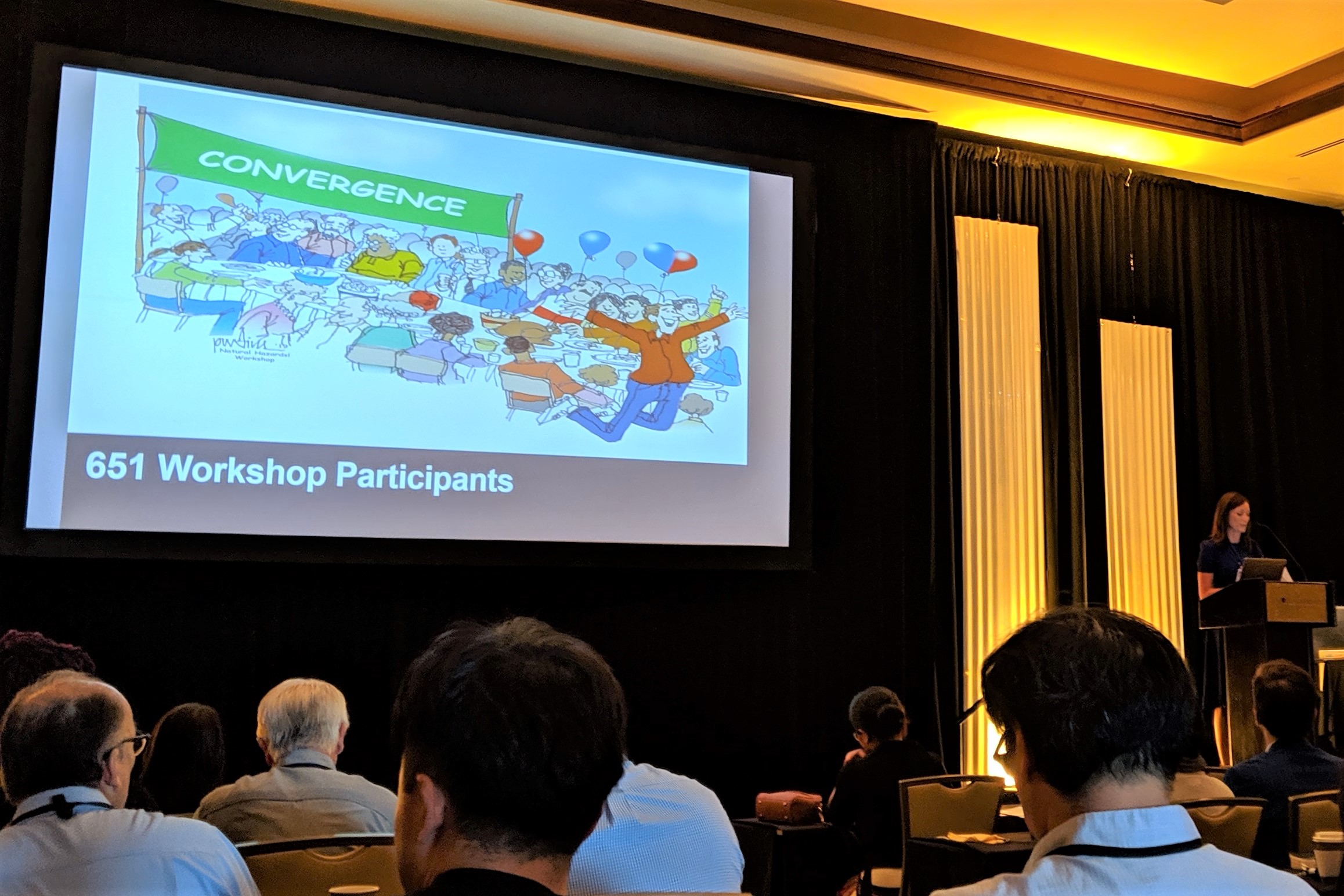Converging disaster researchers in the Asia-Pacific Region

Monday morning, July 15, 2019, the first full day of the 44th Annual Natural Hazards Research and Applications Workshop: not quite knowing what to expect, we (Sabine Loos and Yolanda Lin) were skeptical about the first item on the agenda for the day. It looked as though a full hour and a half was blocked out for introductions — turns out, every one of those 90 minutes was completely necessary because this workshop starts with the tradition of every participant (this year, a record ~650!) standing up to introduce themselves by giving their name and affiliation. Our skepticism melted away when the introductions got underway, and in that opening hour and a half, we knew there was something very different about this conference: personal, interactive, vibrant, dynamic — a community we knew we were excited to join.

That spirit of the opening introduction session carried us through the rest of the week. Every year, the Natural Hazards Center holds a conference bringing together people who work in disasters. Multiple backgrounds are represented–including emergency managers (from all levels of government), quantitative and qualitative researchers, humanitarian organizations, nonprofits, and more. The conference is broken into two parts: 1) the workshop, which spanned the first three days and 2) the researcher’s meeting to bring the event through the end of the week. This year, the workshop focused on the theme of convergence: people working together to respond to pressing challenges and enduring problems, creating connections across boundaries of all types, including disciplinary, organizational, geographic, cultural, or otherwise, and creating fertile grounds for scientific and applicational breakthroughs.
The researcher’s meeting focused on transdisciplinary research, which is similar to convergence, except without convergence’s sense of urgency. Essentially, it is the academic cousin of convergence. The presentations we heard ranged from education (i.e. how do we build boundary-spanning curriculums for our next generation of disaster practitioners) to research methods (i.e. how do we build effective teams where disciplines converge and create together instead of just work together?).
Many of these discussions were focused on the US. Given that we (Yolanda representing DASL and NTU, and Sabine wearing double hats with DASL and SURI) are in the unique position to bring together our budding networks from our disaster research in Asia, we decided to put together an invited session on “Transdisciplinary data convergence in the Asia-Pacific region” for the researcher’s meeting.

The Asia-Pacific region is an exciting opportunity for transdisciplinary work, because the research space is still rapidly growing and forming, the region is traditionally less data-rich, which inspires more creative data collection and data use; meanwhile, the hazards are numerous and the risks rapidly evolving due to population growth and climate change, and requires the need to balance development with disaster risk reduction.
Our session started off with six lightning presentations, spanning about the first half of our 90-minute session, and we opened the floor to a round table discussion for the second half.
The presentations and presenters included:
- Transdisciplinarity, Disasters and the Liberal Arts and Sciences in Asia
Brian McAdoo (Yale – National University of Singapore) - Local Residents’ Responses to the 2018 Indonesia Earthquake and Tsunami: Reconnaissance Trip and Findings
Haizhong Wang (Oregon State University) - An interdisciplinary approach to evaluate the sustainable resilience of communities
Hiba Baroud (Vanderbilt University) - VGI in Disaster Management: Designing a Framework for Integration
Emir Hartato (Planet Labs, Indonesia) - Post-disaster informatics: a technological approach to recovery planning
Sabine Loos (Stanford Urban Resilience Initiative) - In the absence of consequential past events for disaster risk analysis: a counterfactual framework for uncovering black swans
Yolanda Lin (Nanyang Technological University)
While we can’t capture the whole discussion that followed, the room converged on a few key points:
- the need for more data, analysis, and management practices – the availability of data and its ease of access varies from country to country. Because of this, our presenters relied on everything from historical newspaper articles, crowdsourced maps, to remote sensing data—developing new methods to use these types of data. Our discussion brought up not only the need for more data and more analysis methods, but also the need to figure out how to share this data during the entire disaster management cycle.
- strategies for identifying and engaging stakeholders – data is only useful if we can inform our stakeholders. But who are even our stakeholders when we think about disaster risk and recovery work in the Asia-Pacific? Many agreed that the ultimate goal is to help communities, but there are multiple mechanisms to impact a community. Some agreed that the community can drive the research objectives and questions, while others saw governmental bodies and larger organizations (i.e. planners, development banks) as a way to impact communities at a higher level.
- and excitement for a greater research community working in the Asia-Pacific region – we have the opportunity to build a network here that approaches disaster research in an innovative way—by bringing together disciplines and new data—with the goal of reducing risk and supporting resilience for the communities living here.
Moving forward, we’re excited to continue building this community of researchers, advocating for these needs, and addressing these gaps. We’re also hoping to promote more international representation and contexts in future workshops.
We’re still reeling from our first experience at the Natural Hazards Workshop, but already looking forward to the 45th Annual Natural Hazards Workshop!

This post is also available on the Stanford Urban Resilience Initiative blog.